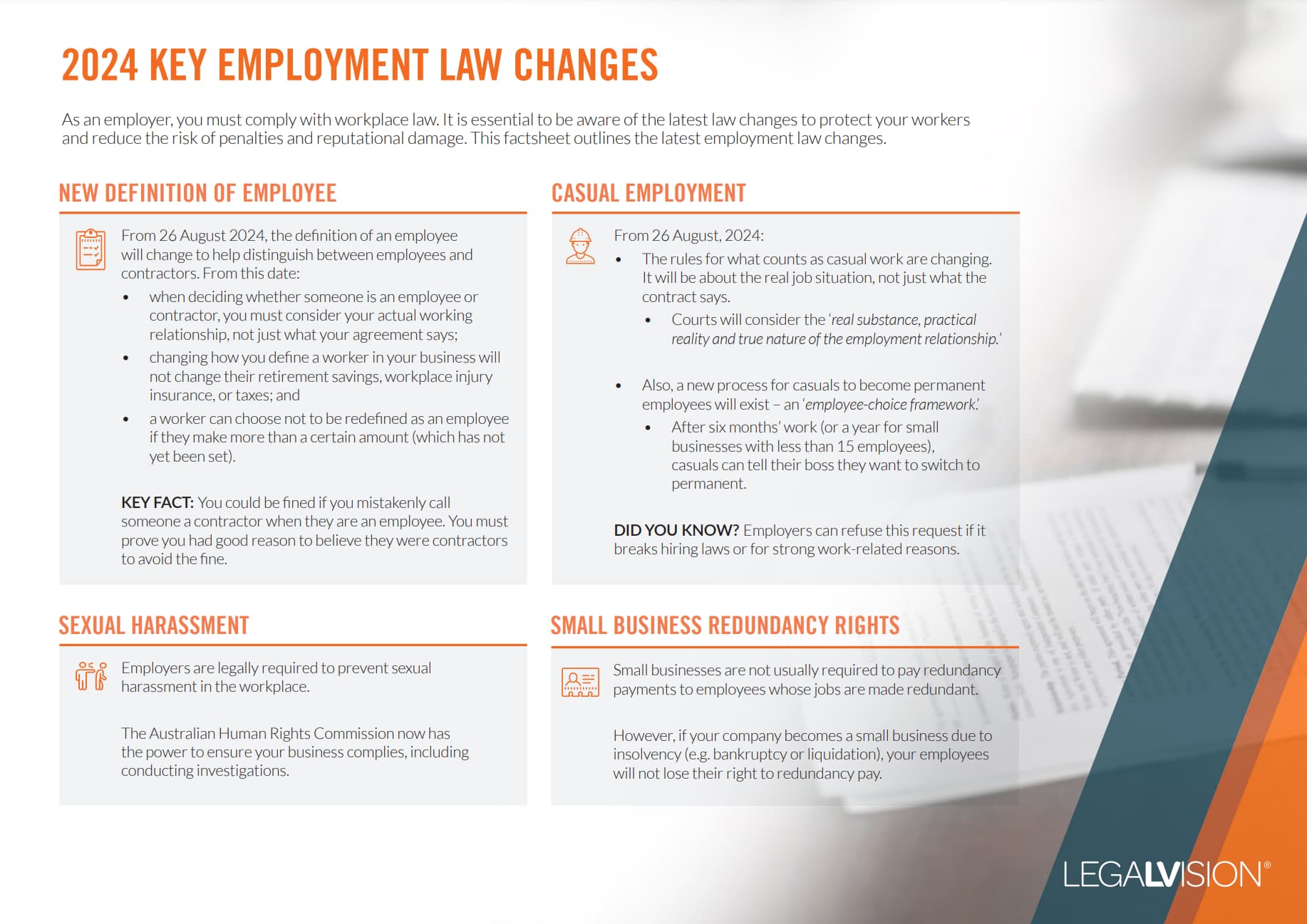In Short
- Work health and safety (WHS) hazards must be identified, assessed, controlled, and reviewed regularly.
- Effective hazard management includes monitoring and reassessing controls to ensure ongoing safety.
- Failure to manage hazards can lead to significant legal and financial consequences for businesses.
Tips for Businesses
Implement a structured approach to WHS by identifying, assessing, and controlling workplace hazards. Regularly review safety measures to ensure they remain effective and compliant with legal obligations. Engaging employees in hazard management and seeking expert advice can help maintain a safe working environment and reduce potential risks.
In today’s dynamic and demanding work environments, ensuring compliance with work health and safety (WHS) regulations is paramount for every employer. From identifying potential hazards to implementing control measures and conducting regular reviews, maintaining a safe workplace requires a comprehensive approach. This article delves into essential tips for you to enhance compliance efforts in workplace health and safety WHS management.
Identifying Hazards
The first step towards compliance is identifying potential hazards in the workplace. Hazards can take many forms, including physical and psychosocial. Some key steps that you can take as an employer to identify risks include:
- regular workplace inspections;
- workplace hazard assessments; and
- recognising and engaging in employee feedback,
These steps can help in recognising risks associated with tasks, equipment, or the work environment. Additionally, you should encourage open communication channels where employees can report hazards promptly. Some easy ways in which you may foster these channels include:
- developing clear processes and procedures that employees can follow in reporting any potential hazards in the workplace; and
- implementing a workplace policy that outlines what is and is not tolerated in the workplace.

As an employer, it is essential to understand what employment laws have changed and their implications for your business — particularly the changes to the Fair Work Act 2009 through the new Closing the Loopholes legislation.
Assessing Risks
Once hazards are identified, you need to assess the associated risks. This involves evaluating the likelihood and severity of potential harm to determine priority areas for intervention. Risk assessment methodologies, such as the hierarchy of controls, can aid in selecting appropriate control measures.
Continue reading this article below the formImplementing Control Measures
After assessing risks, the next crucial step is implementing control measures to mitigate or eliminate hazards. It is important to note that some hazards or risks within the workplace are unavoidable and unable to be eliminated. Some industries where this may be especially applicable include:
- construction;
- NDIS providers; and
- manufacturing and production.
However, where hazards and risks are unavoidable, you are required to minimise these as far as reasonably practicable. Some steps that you can take in this process include:
- prioritising controls that directly eliminate the hazard or reduce exposure;
- following the hierarchy of controls, which includes elimination, substitution, engineering controls, administrative controls; and
- implement any practical measures, such as providing employees with personal protective equipment, to minimise or eliminate risks.
Regular Review and Evaluation
Compliance is an ongoing process that requires regular review and evaluation of control measures. You should establish a structured review schedule to assess the effectiveness of implemented controls and identify any emerging hazards or changing workplace conditions. This means that you should look to conduct:
- thorough incident investigations;
- near-miss reporting; and
- safety audits.
By conducting regular reviews, you will be able to gain valuable insights into areas needing improvement. Your overarching goal should be to undergo continuous improvement by making adjustments based on new review findings.
Centralised Policies and Documentation
Creating a centralised repository for WHS policies, procedures, and documentation is crucial for effective compliance management. This repository serves as a single source that clarifies your business’ stance on how hazards are managed and the obligations of employees for mitigating risks, making this information accessible to all employees.
You may choose to utilise digital platforms or intranet systems to house this information, making it readily available for reference and updates as needed.
Consultation and Training
Employee training is instrumental in fostering a culture of safety and ensuring compliance with WHS regulations. It is in your best interest to provide comprehensive training programs covering:
- hazard identification;
- risk assessment;
- proper use of control measures;
- emergency procedures; and
- relevant regulations.
Training should be tailored to specific job roles and regularly reinforced through refresher courses or toolbox talks.
Engaging employees in both formal and informal consultation processes is essential for effective compliance management. Formal mechanisms such as safety committees or regular meetings provide a structured platform for discussing safety concerns, reviewing policies, and making collective decisions.
Additionally, fostering a culture of open communication encourages informal consultations where employees feel empowered to raise safety issues or suggestions for improvement directly with management.
Key Takeaways
In conclusion, achieving compliance with workplace health and safety regulations requires a multifaceted approach encompassing:
- hazard identification;
- risk assessment;
- control measures implementation; and
- regular review.
In addition, you can create both a safer work environment and a culture of safe work practices and reporting by:
- establishing centralised policies;
- comprehensive training programs; and
- fostering a culture of consultation, employers can create safer work environments and promote continuous improvement in WHS/OHS management.
Ultimately, prioritising compliance not only enhances employee well-being but also contributes to organisational success and sustainability.
If you have questions about your WHS duties, our experienced employment lawyers can assist as part of our LegalVision membership. For a low monthly fee, you will have unlimited access to lawyers to answer your questions and draft and review your documents. Call us today on 1300 544 755 or visit our membership page.
Frequently Asked Questions
The first step towards compliance is identifying potential hazards in the workplace. This can be done through regular inspections, hazard assessments, and employee feedback.
Employers can foster open communication by developing clear reporting procedures and implementing workplace policies that outline acceptable practices.
We appreciate your feedback – your submission has been successfully received.










